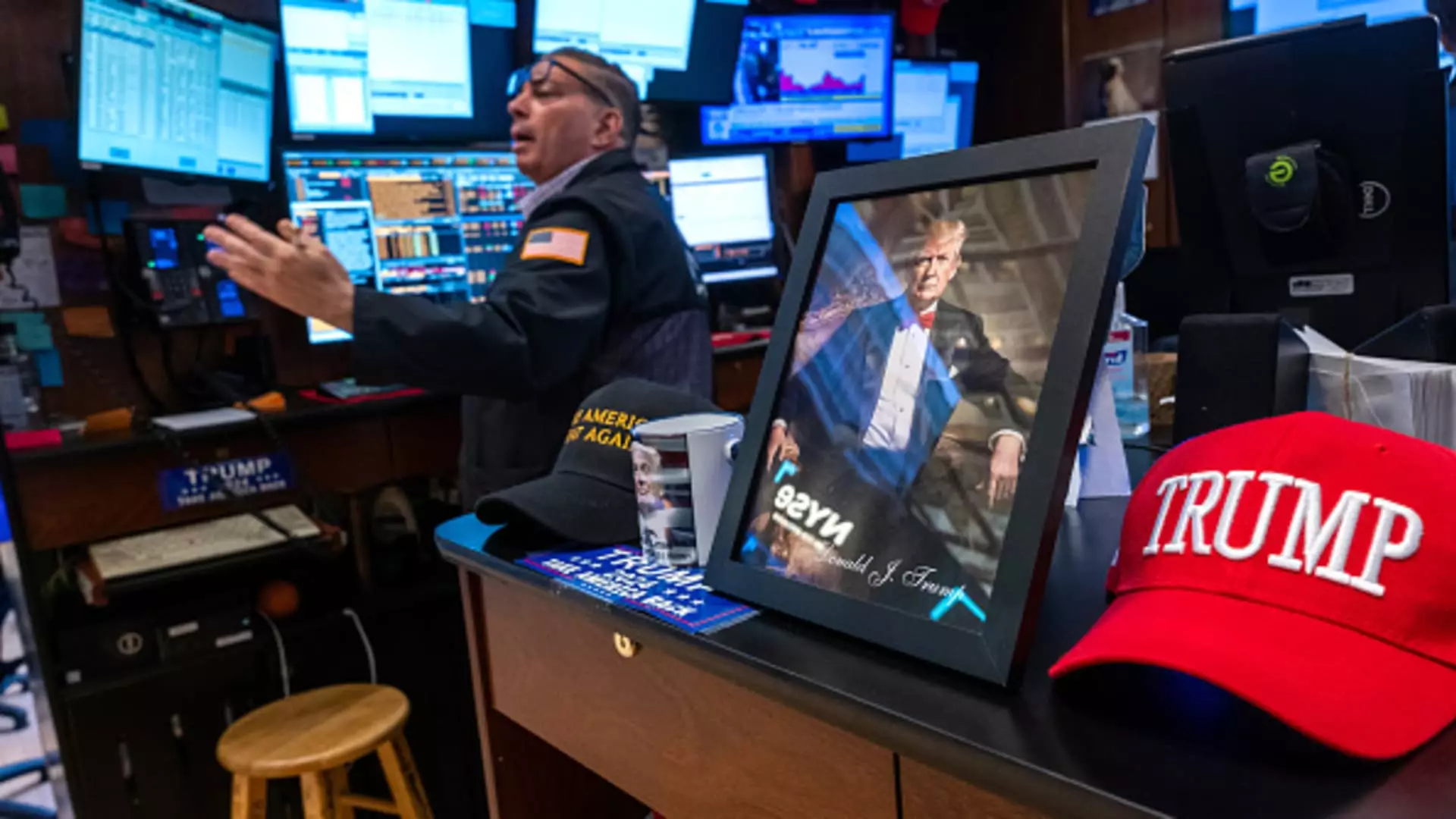The U.S. stock market has long been a battleground of optimism and despair, often shaped by the presidency at the helm. Under the Trump administration, investors have found themselves navigating a sea of volatility, akin to a rollercoaster ride with no seatbelt. When analyzing the data from sources like Morningstar Direct, the findings reveal that the market has maintained a precarious balance, with the S&P 500’s annualized return standing at a meager 1.58% during Trump’s second term. This might seem a far cry from the robust growth observed during earlier presidencies, yet it raises compelling questions about investor sentiment and long-term strategies.
Remarkably, during the Trump administration, the market saw numerous unsettling days—six days alone where the S&P 500 plunged by 2% or more. Such fluctuation can easily lead to panic among investors, inviting hasty decisions that often result in losses. This highlights a crucial lesson embedded in the heart of investing: emotional responses can wreak havoc on financial future. As noted by financial experts like Cathy Curtis, the founder of Curtis Financial Planning, “volatility doesn’t predict direction.” While it’s tempting to react impulsively, a more measured approach could yield dividends down the road.
Comparative Analysis: The Economic Spectrum
In reflecting on how investor returns can drastically differ across presidential terms, we encounter a stark contrast. The S&P 500 surged nearly 34% early in Joe Biden’s presidency and around 30% during Barack Obama’s administrations. Economic conditions and investor confidence play pivotal roles in these fluctuations, revealing that it’s not merely the presidency that dictates market performance but a complex interplay of external factors.
Conversely, the tenure of George W. Bush offered a cautionary tale; the market slumped nearly 12% during his first term. The same economic ripples expected in turbulent times today are evident across history. The comparisons elucidate the ongoing risk of political events influencing the market, compelling us to ask if today’s investors have sufficient foresight to weather inevitable fluctuations.
The Psychology of Investing: Why Staying Put Matters
Ultimately, the single most compelling takeaway from the current market dynamics is the psychological element that intertwines with financial decisions. Douglas Boneparth, a financial planner, reminds us of the perils associated with reactive investing. “Sharp daily declines can test resolve,” he notes, but history suggests that staying in the game can lead to greater long-term gains.
If we focus on longer horizons, it becomes apparent that the stock market, despite its short-term volatility, has demonstrated remarkable resilience over the decades. For instance, if you had invested just $1,000 back in 1950, a modest sum by today’s standards, you would have witnessed a swell to approximately $3.8 million as of June 6th of this year. These compelling figures underscore the importance of patience and long-term vision, qualities that can often be overshadowed in the face of immediate uncertainties.
Looking Ahead: A Call for Steadfast Investment Strategies
It is crucial for investors, particularly those who lean toward center-wing liberalism, to recognize that political ideologies can significantly affect market behavior. Yet, with each election cycle, and in the midst of continual market upheaval, the persistent message remains: maintaining a focus on sound financial principles is paramount. Rather than viewing the economic landscape through the narrow lens of political leadership, it’s time for investors to cultivate a broader perspective, developing resilience amidst fluctuating tides.
As we forge ahead, embracing strategies that prioritize long-term growth over knee-jerk reactions will be vital. The market inevitably faces periods of turmoil; however, the overarching trend suggests that resilience and informed strategies can lead to eventual triumph amidst adversity. Keeping faith in the process, rather than succumbing to panic, can empower investors to ride out the storm and unfurl the sails toward financial prosperity.

